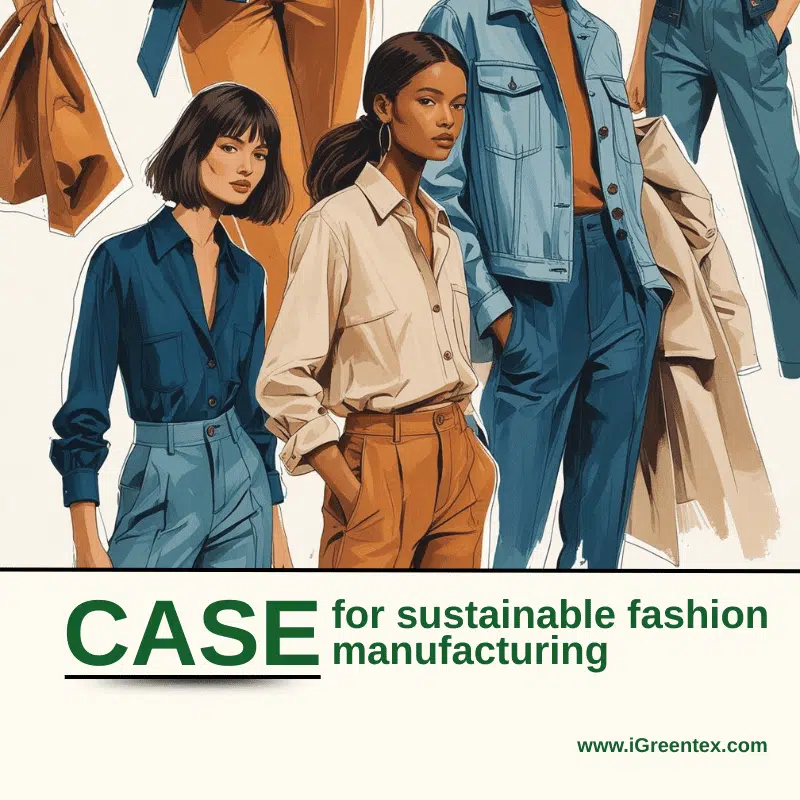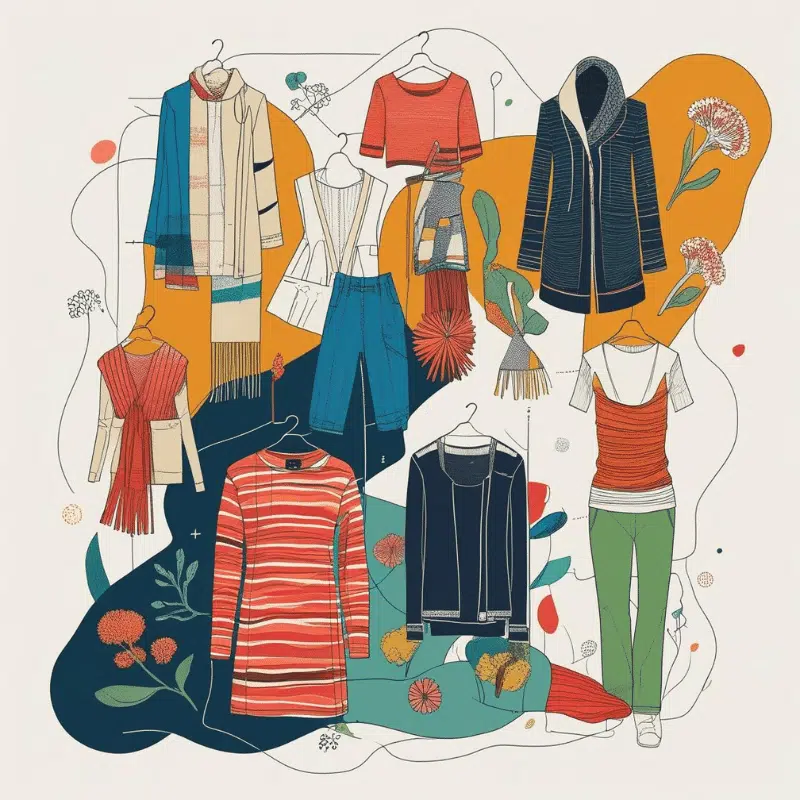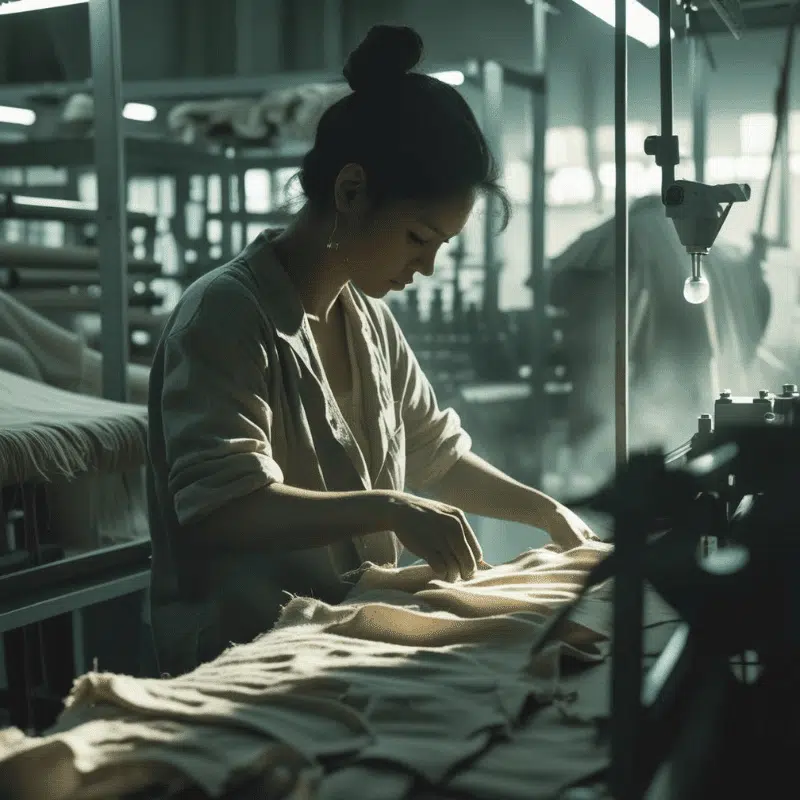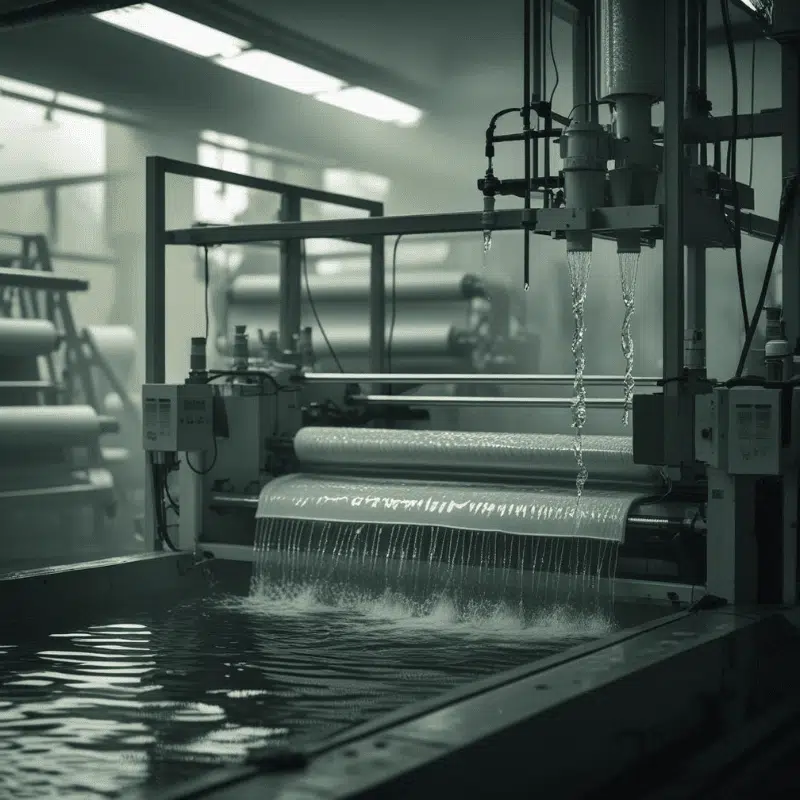- Sustainability Is More Than Responsibility, It’s a Competitive Edge: Analyzing the Business Case for Sustainable Fashion Manufacturing
- The CEO’s Dilemma: Balancing Profit with Purpose
- Redefining Sustainability: From Cost Center to Growth Engine
- Revenue Impact: Accessing Premium Markets and Customer Segments
- Cost Optimization: Operational Efficiency Through Sustainable Practices
- Brand Value Enhancement: Building Premium Positioning
- Risk Mitigation: Protecting Against Operational and Reputational Threats
- Building Your Business Case: Framework and Metrics
- Industry Benchmarking: Learning from Success Stories
- Investment Justification: Making the Financial Case
- Partnership Strategy: Leveraging Expertise and Capabilities
- Measuring Success: Tracking Your Investment
- Future-Proofing Your Business
- Conclusion: The Strategic Imperative
- About IGREEN TEX
- IGREEN TEX VIETNAM CO LTD
Sustainability Is More Than Responsibility, It’s a Competitive Edge: Analyzing the Business Case for Sustainable Fashion Manufacturing
The CEO’s Dilemma: Balancing Profit with Purpose
David Lee sits across from his board members, quarterly reports spread across the mahogany table. The numbers look solid, but the conversation keeps circling back to sustainability. Investors want answers. Retail partners demand certifications. Consumers post reviews about environmental impact.

The pressure is mounting, but so are the questions. How do you justify millions in sustainable manufacturing investments to shareholders focused on quarterly returns? Where’s the hard data proving that green initiatives deliver measurable ROI? Most importantly, how do you build a bulletproof business case for sustainable fashion manufacturing that satisfies both profit margins and purpose?
This analysis cuts through the noise to deliver exactly what executives need: a data-driven framework demonstrating why sustainable manufacturing isn’t just responsible business—it’s profitable business.
See more: Vietnam Apparel Production Scalability for Streetwear Brand
See more: Ethical Streetwear Production Vietnam
See more: Vietnam’s Textile Innovation Hubs for Streetwear Development
See more: Risk Mitigation Strategies for Manufacturing Streetwear
See more: Quality Assurance Benchmarks for Vietnamese-Made Streetwear
See more: How to Build Partnerships Vietnamese Apparel Factories
Redefining Sustainability: From Cost Center to Growth Engine
The traditional view positions sustainability as a necessary evil. A checkbox exercise. A marketing expense that drains resources while delivering feel-good PR. This perspective fundamentally misunderstands the modern market reality.
Today’s business case for sustainable fashion manufacturing rests on a simple truth: sustainability drives competitive advantage across every business function. It reduces operational costs, opens new revenue streams, attracts premium customers, and mitigates existential risks. The companies that recognize this shift early gain first-mover advantages that compound over time.

Consider the financial trajectory of businesses that embraced sustainable practices early versus those that waited. The early adopters consistently outperform on key metrics: customer retention, margin expansion, talent acquisition, and regulatory compliance costs. They’ve turned sustainability from a cost center into a profit center.
The business case for sustainable fashion manufacturing transforms when you view it through this lens. Every sustainable initiative becomes an investment with measurable returns. Every green process improvement becomes a competitive differentiator. Every ethical sourcing decision becomes a risk mitigation strategy.
Revenue Impact: Accessing Premium Markets and Customer Segments
Premium Pricing Power
Sustainable products command price premiums across multiple customer segments. Research consistently shows that consumers will pay 15-20% more for products from companies with strong environmental credentials. This isn’t charity—it’s rational consumer behavior driven by quality perceptions and values alignment.
The business case for sustainable fashion manufacturing becomes compelling when you calculate the revenue impact. A 15% price premium on a $50 million revenue base generates an additional $7.5 million annually. Factor in the customer lifetime value of environmentally conscious consumers—typically 2-3 times higher than average—and the revenue multiplier effect becomes substantial.
Companies implementing choosing sustainable fabrics for apparel brands strategies report consistent margin improvements. Organic cotton, recycled polyester, and innovative bio-materials often cost more initially but enable premium positioning that more than compensates for higher input costs.
Market Access and Retail Partnerships
Major retailers now maintain strict sustainability scorecards for vendor partnerships. Walmart, Target, and H&M require detailed environmental impact reporting. Brands failing these assessments lose access to massive distribution channels.
The business case for sustainable fashion manufacturing includes quantifiable market access benefits. Landing a major retail partnership can generate $10-50 million in additional revenue annually. Sustainable credentials often determine which brands get considered for these partnerships.
European and Asian markets increasingly require sustainability certifications for apparel imports. Companies with established sustainable manufacturing capabilities can access these markets immediately, while competitors face months of compliance delays and certification costs.
Customer Acquisition and Retention
Sustainable brands enjoy superior customer acquisition metrics. They generate 2-3 times more organic social media engagement. Their customers exhibit higher retention rates and stronger brand advocacy. Word-of-mouth marketing from satisfied conscious consumers drives significant customer acquisition cost savings.
The business case for sustainable fashion manufacturing includes these customer economics. If customer acquisition costs decrease by 20% while customer lifetime value increases by 30%, the combined impact significantly improves unit economics and scalability.
Cost Optimization: Operational Efficiency Through Sustainable Practices
Resource Efficiency and Utility Savings
Sustainable manufacturing practices deliver immediate cost savings through resource optimization. Water conservation techniques in textile industry vietnam can reduce water usage by 30-50%, translating to substantial utility cost savings. Energy-efficient equipment and renewable energy adoption similarly reduce operational expenses.
A typical apparel manufacturing facility spending $2 million annually on utilities can save $400,000-600,000 through comprehensive sustainability improvements. These savings compound annually, creating significant long-term value that strengthens the business case for sustainable fashion manufacturing.

Waste reduction initiatives often generate even larger savings. Optimized cutting patterns, material recycling programs, and zero-waste design approaches can reduce material costs by 15-25%. For a company with $20 million in annual material costs, this represents $3-5 million in annual savings.
Supply Chain Efficiency
Sustainable sourcing often requires building closer supplier relationships and implementing more efficient processes. These improvements reduce lead times, minimize quality issues, and decrease inventory carrying costs.
The business case for sustainable fashion manufacturing includes supply chain optimization benefits. Reduced lead times can decrease inventory requirements by 20-30%, freeing up working capital for growth investments. Improved quality reduces returns and warranty costs, protecting margins.
Supplier diversity initiatives—often components of sustainability programs—can reduce supply chain risk and negotiate better terms. Companies with diverse supplier bases report 15-20% lower procurement costs and greater supply chain resilience.
Regulatory Compliance and Risk Mitigation
Proactive sustainability investments reduce future compliance costs and regulatory risks. Companies with established sustainable practices avoid rushed compliance expenses when new regulations emerge.
The business case for sustainable fashion manufacturing includes regulatory cost avoidance. Carbon taxes, water usage fees, and waste disposal regulations continue expanding globally. Early compliance prevents costly retrofitting and penalty payments.
Brand Value Enhancement: Building Premium Positioning
Brand Equity and Customer Perception
Sustainable brands consistently achieve higher brand valuation multiples. They command premium positioning in customer minds, translating to pricing power and competitive moats. This intangible asset value represents significant shareholder value creation.
The business case for sustainable fashion manufacturing includes brand equity enhancement. Companies with strong sustainability credentials often trade at 20-30% higher revenue multiples compared to conventional competitors. For a company generating $100 million in revenue, this represents $20-30 million in additional enterprise value.
Marketing sustainable fashion to conscious consumers strategies amplify brand value creation. Authentic sustainability stories resonate powerfully with target audiences, generating earned media coverage and social media engagement that would cost millions to purchase through traditional advertising.
Talent Acquisition and Retention
Sustainable companies attract superior talent across all functions. Top performers increasingly choose employers based on values alignment and environmental impact. This talent advantage translates to better execution, innovation, and business performance.
The business case for sustainable fashion manufacturing includes talent economics. Companies with strong sustainability credentials report 25% lower employee turnover and 30% higher application rates for open positions. Reduced recruitment costs and improved retention create measurable value.
High-performing employees at sustainable companies often accept 10-15% lower compensation in exchange for values alignment and mission-driven work. This compensation flexibility improves profit margins while attracting committed team members.
Risk Mitigation: Protecting Against Operational and Reputational Threats
Reputational Risk Management
Social media amplifies reputational risks exponentially. A single supply chain incident can trigger viral negative coverage, destroying brand value overnight. Sustainable practices provide insurance against these existential threats.
The business case for sustainable fashion manufacturing includes reputational risk mitigation. Companies with transparent, ethical supply chains rarely face viral negative coverage. When issues arise, their established credibility provides benefit-of-the-doubt protection.
Overcoming challenges in implementing ethical apparel production requires systematic risk assessment and mitigation strategies. Companies that address these challenges proactively avoid costly reactive measures and reputation damage.
Supply Chain Resilience
Sustainable supply chains often prove more resilient during disruptions. Diversified supplier bases, local sourcing options, and long-term partnership approaches provide flexibility during crises.
The business case for sustainable fashion manufacturing includes supply chain risk mitigation. Companies with transparent sustainable supply chain for global streetwear brands vietnam partnerships weathered COVID-19 disruptions more effectively than those with conventional supply chains.
Sustainable suppliers often maintain better financial health and operational stability. They’re less likely to suddenly exit the market or compromise quality during difficult periods. This stability protects production schedules and quality standards.
Regulatory and Legal Risk
Environmental regulations continue expanding globally. Companies with established sustainable practices face lower regulatory risk and compliance costs. They can adapt to new requirements more quickly and cost-effectively.
The business case for sustainable fashion manufacturing includes regulatory risk mitigation. Proactive compliance prevents costly penalties and operational disruptions. It also provides competitive advantages when regulations disadvantage less prepared competitors.
Building Your Business Case: Framework and Metrics
Financial Modeling Approach
Developing a compelling business case for sustainable fashion manufacturing requires rigorous financial analysis. Start with baseline cost structures and revenue projections. Model the impact of sustainable initiatives across all relevant metrics.
Revenue modeling should include premium pricing opportunities, market access benefits, and customer lifetime value improvements. Cost modeling should capture operational efficiency gains, resource savings, and risk mitigation benefits. Don’t forget to include implementation costs and timeline considerations.
Use sensitivity analysis to test assumptions and identify key value drivers. This approach strengthens your business case for sustainable fashion manufacturing by demonstrating thorough analysis and realistic projections.
Key Performance Indicators
Establish clear KPIs to measure sustainability ROI. Financial metrics should include revenue growth, margin improvement, cost reduction, and return on investment. Operational metrics should track resource efficiency, waste reduction, and supply chain performance.
Customer metrics should monitor satisfaction scores, retention rates, and brand perception measures. Employee metrics should track retention, engagement, and recruitment success. These comprehensive metrics validate your business case for sustainable fashion manufacturing over time.
Implementation Roadmap
Structure your sustainability initiative as a phased approach with clear milestones and success metrics. Start with high-impact, low-cost improvements that deliver quick wins. Build momentum for larger investments through demonstrated success.
Phase 1 might focus on operational efficiency improvements and supplier partnerships. Phase 2 could expand into sustainable material sourcing and process optimization. Phase 3 might include facility upgrades and comprehensive certification programs.
This roadmap approach makes your business case for sustainable fashion manufacturing more credible and executable. Board members and investors appreciate structured plans with clear accountability and measurable outcomes.
Industry Benchmarking: Learning from Success Stories
Market Leader Performance
Leading sustainable fashion brands consistently outperform conventional competitors across key metrics. They achieve higher revenue growth, superior margins, and stronger customer loyalty. These performance differences validate the business case for sustainable fashion manufacturing.
Patagonia, Eileen Fisher, and Stella McCartney demonstrate sustained financial success through sustainability leadership. Their performance metrics provide benchmarks for evaluating potential returns from sustainable manufacturing investments.
Competitive Positioning
Companies with strong sustainability credentials occupy premium market positions that competitors struggle to replicate. They enjoy first-mover advantages in conscious consumer segments and premium retail channels.
The business case for sustainable fashion manufacturing includes competitive positioning benefits. Early adopters establish market leadership positions that become increasingly difficult to challenge as sustainability becomes mainstream.
Innovation and Differentiation
Sustainable fashion companies often lead in innovation and product differentiation. Their focus on environmental impact drives creative solutions and breakthrough technologies. This innovation leadership creates additional competitive advantages.
Investment Justification: Making the Financial Case
Capital Requirements and Returns
Sustainable manufacturing investments typically require 15-25% higher initial capital compared to conventional approaches. However, the return profile often justifies this premium through operational savings, revenue premiums, and risk mitigation benefits.
The business case for sustainable fashion manufacturing should model total cost of ownership over 5-10 year periods. While upfront costs may be higher, operational savings and revenue benefits often generate attractive returns within 3-5 years.
Financing Options and Incentives
Green financing options can reduce the cost of sustainable manufacturing investments. Government incentives, green bonds, and sustainability-linked loans provide attractive financing terms for qualifying projects.
These financing benefits strengthen your business case for sustainable fashion manufacturing by reducing capital costs and improving project returns. Many companies find that green financing options make sustainable investments more attractive than conventional alternatives.
Risk-Adjusted Returns
Sustainable manufacturing investments often provide superior risk-adjusted returns compared to conventional alternatives. Lower operational risks, regulatory compliance benefits, and reputational protection contribute to more predictable cash flows.
The business case for sustainable fashion manufacturing should highlight these risk-adjusted return benefits. Investors increasingly value predictable cash flows and risk mitigation in uncertain business environments.
Partnership Strategy: Leveraging Expertise and Capabilities
Manufacturing Partner Selection
Choosing the right manufacturing partner is crucial for sustainable fashion success. Look for partners with established sustainability expertise, transparent processes, and commitment to continuous improvement.
iGreen Tex Vietnam exemplifies the ideal sustainable manufacturing partner. Their expertise in sustainable processes, commitment to transparency, and focus on continuous improvement make them valuable strategic partners rather than just vendors.
Technology and Innovation Partnerships
Sustainable fashion often requires new technologies and innovative approaches. Partner with technology providers, material suppliers, and research institutions to access cutting-edge solutions.
The business case for sustainable fashion manufacturing becomes stronger when you leverage partner expertise and capabilities. These partnerships reduce implementation risks and accelerate time to market for sustainable initiatives.
Industry Collaboration
Participate in industry sustainability initiatives and collaborative programs. These efforts often provide access to shared resources, best practices, and collective bargaining power for sustainable materials and processes.
Measuring Success: Tracking Your Investment
Financial Performance Tracking
Implement robust financial tracking systems to monitor sustainability investment performance. Track revenue impact, cost savings, and return on investment across all sustainable initiatives.

Regular performance reviews validate your business case for sustainable fashion manufacturing and identify opportunities for optimization. Share results with stakeholders to maintain support for sustainability investments.
Operational Efficiency Metrics
Monitor operational efficiency improvements from sustainable practices. Track resource usage, waste reduction, and process optimization metrics. These operational improvements often provide the most immediate and measurable returns.
Customer and Market Response
Monitor customer satisfaction, brand perception, and market response to sustainability initiatives. These metrics validate the revenue and positioning benefits included in your business case for sustainable fashion manufacturing.
Future-Proofing Your Business
Regulatory Trends and Implications
Environmental regulations continue expanding globally. Stay ahead of regulatory trends to avoid compliance costs and maintain competitive advantages. Proactive compliance strengthens your business case for sustainable fashion manufacturing.
Technology and Innovation Trends
Sustainable fashion technologies continue advancing rapidly. Stay informed about new materials, processes, and innovations. Early adoption of breakthrough technologies can provide significant competitive advantages.
Market Evolution and Consumer Behavior
Consumer preferences continue shifting toward sustainable products. This trend strengthens the business case for sustainable fashion manufacturing by expanding market opportunities and premium positioning benefits.
Conclusion: The Strategic Imperative
The business case for sustainable fashion manufacturing is no longer theoretical—it’s proven, measurable, and essential for long-term success. Companies that embrace sustainability early gain competitive advantages that compound over time.
Revenue benefits include premium pricing, market access, and customer loyalty. Cost benefits include operational efficiency, resource savings, and risk mitigation. Strategic benefits include brand value, talent acquisition, and competitive positioning.
For executives like David Lee, the question isn’t whether to invest in sustainable manufacturing—it’s how quickly you can build and execute a comprehensive strategy. The companies that move first will establish market leadership positions that become increasingly difficult to challenge.
iGreen Tex Vietnam stands ready to partner with forward-thinking executives who recognize this strategic imperative. Our expertise, transparency, and commitment to excellence make us ideal partners for building your business case for sustainable fashion manufacturing.
The data is clear. The opportunity is significant. The time to act is now. Your business case for sustainable fashion manufacturing isn’t just about doing good—it’s about building a more profitable, resilient, and competitive business for the future.
About IGREEN TEX
IGREEN TEX is a provider of fashion and textile products, offering a wide range of both domestically and internationally. Our commitment to quality ensures that our products not only meet the highest standards but also promote eco-friendly practices, in Vietnam sportswear manufacturing.
If you want to read more information about canvas bags, and if you want to tote bags at Tphcm, you can see it here!!!
To view product information click here
Visit our website to learn more about our products and services: IGREEN TEX
IGREEN TEX VIETNAM CO LTD
Address: No. 6 – 6A, D52 Street, Ward Bay Hien, HCMC
E-mail: info@igreentex.com
WhatsApp/Viber/Zalo: +84 938.045.900